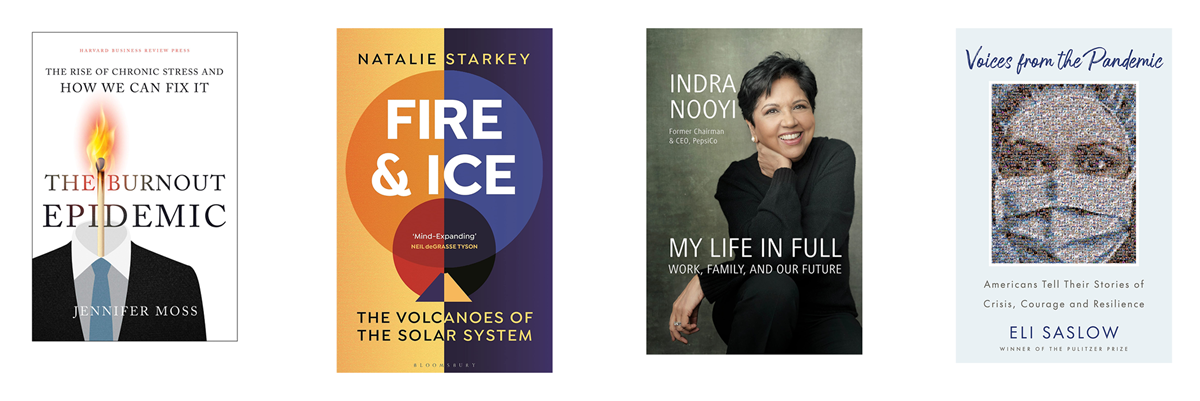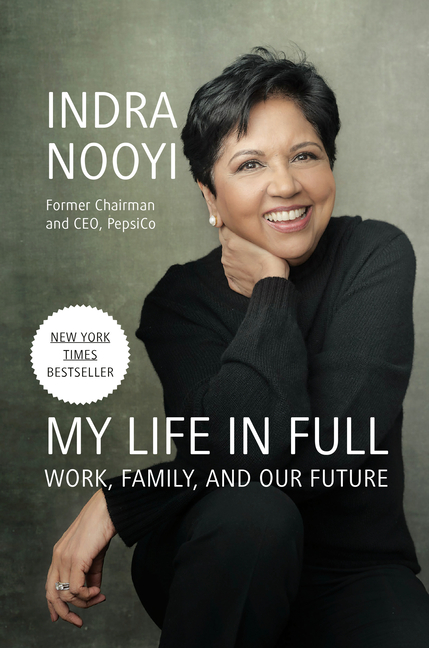Books to Watch | September 28, 2021
September 28, 2021
Each and every week, our marketing team—Dylan Schleicher (DJJS), Gabbi Cisneros (GMC), and now Emily Porter (EPP)—highlights a few new books we are most excited about.
This week, our choices are:

The Burnout Epidemic: The Rise of Chronic Stress and How We Can Fix It by Jennifer Moss, Harvard Business Review Press
There's been no shortage of books about burnout lately, a topic that I want to say was pushed to the forefront of everyone's minds because of the pandemic. Realistically, I think burnout has more likely been overlooked, ignored, and pushed to the backs of our minds amidst the tumult of the times. Or if we thought anything about burnout, we weren't thinking of it in the right ways. Burnout is not just overworking and it can't just be fixed with self-care. As Jennifer Moss writes in The Burnout Epidemic:
[B]urnout is a complex constellation of poor workplace practices and policies, antiquated institutional legacies, roles and personalities at higher risk, and systemic, societal issues that have been left unchanged plaguing us for far too long.
Moss reveals the blindspots of burnout from across the six main triggers: workload, perceived lack of control, lack of reward or recognition, poor relationships, lack of fairness, and mismatched values. With a variety of case studies, suggestions to transform the workplace in small ways, and questions to encourage further thinking about how your workplace prompts or prevents burnout. The Burnout Epidemic provides essential information for company leaders to rethink how they're combating burnout in the workplace and in their own lives. (GMC)
Fire & Ice: Volcanoes of Our Solar System by Natalie Starkey, Bloomsbury Sigma
Many of us have middle school memories of creating a papier mache volcano, and watching the red foam come spilling from the top with fascination and glee. Natalie Starkey, a geologist and cosmologist, has written an in-depth look into what makes volcanoes and what we are still discovering about their origins and locations within the solar system. Yes, there are volcanoes on other planets! There are ice volcanoes, volcanoes that release matter other than lava, volcanoes above ground, under oceans, and volcanoes that sit on top of other planets within the solar system. They range in shape from the average stunted pyramid we all learn about in elementary school, to shield volcanoes, submarine volcanoes, mantle plumes, and more. We know that Earth and Venus still have active volcanoes, as do moons of Jupiter, Neptune and Saturn. And many other places in our solar system, including Mars and even our own moon, show ample evidence of past volcanic activity. These activity impressions help us know the past terrain of the planet or moon and what once was. But there is still a lot we don’t know:
Applying our knowledge about Earth’s volcanoes to the many existing in space has its limitations. Not only are volcanoes in space hard to get to, difficult to obtain images of and measure and analyze, but their eruptions occur in environments that are very different from those on Earth. Nevertheless, the best way for us to understand what we see in space is still to study Earth’s volcanoes.
We, as humans, have been studying volcanoes for centuries, but there is still so much we don’t know, and most of what we do know only pertains to what we have experienced here on Earth. What about the volcanoes throughout the solar system that do not fit into our box in definition? If you’re interested in recapturing some of that fascination you had if you ever made a volcano in school, or were even just intrigued when you saw the experiment on screen (and who hasn’t) take a journey uncovering the universe's volcanoes, hot and cold, in this interesting read by Natalie Starkey. (EPP)
My Life in Full: Work, Family, and Our Future by Indra Nooyi, Portfolio
Indra Nooyi told everyone she wasn’t going to write a memoir. She wanted to devote herself to writing a “manual for fixing how we mix work and family.” It is a topic she has had occasion to think about, and been asked to address, more often than her male peers. Among the group of global leaders she regularly found herself in the room with after she became CEO of PepsiCo, she discovered that the conversation got around to many topics, even as far-flung as “flying to Mars,” but:
Family—the actual messy, delightful, difficult, and treasured core of how most of us live—was fringe.
Once she sat down to write that book, however, she found that the work she wanted to do on the topic had already been done, “from every angle, in every corner of the world.” Her recompiling the evidence about the economic benefits of early childhood education or paternity leave, she discovered, wasn’t really needed. But what she has experienced, and how she came to understand the issues on a personal level, and telling her story as one of the first generation of women to attend business school in India, as the first woman of color and immigrant to lead a Fortune 50 company in America? Well, that certainly hadn’t been done before, and only she could do it. I am so glad she did, because the book is really good. But true to the book she originally set out to write, she also addresses the “duty of care” we all have to each other, and the need to build in greater care infrastructure for working people—specifically for women—and their families in our society. Such a focus on care is not only the right thing to do but will “be a competitive advantage for every company, community, and state where we make it happen.” And with people like Indra Nooyi committed to it, maybe we finally can make it happen. (DJJS)
Voices from the Pandemic: Americans Tell Their Stories of Crisis, Courage and Resilience by Eli Saslow, Doubleday
Eli Saslow’s interviews with people from across America about their personal experiences of the COVID-19 pandemic are often intensely emotional. The first person he speaks to in the book is a man who has just lost his partner—the very first person to die of the disease in the state of Indiana—and is in quarantine himself. “She’s dead, and I’m quarantined. That’s how the story ends.” Those are the opening words of Chapter One. It is a gut-punch. The next person up is the shift leader of a nursing team in Detroit. “Overwhelmed would have been a good word for this hospital a week or so ago, when the pandemic was just starting. Now we’re beyond that—we’re way out of our depth.” Most of us can’t imagine the horrors of working in a hospital during a time like this, but I think most of us can relate to that feeling of being beyond overwhelmed. The pandemic has touched us all and will continue to do so even when it finally ends. As Saslow writes in his Introduction:
The COVID-19 pandemic was the rare international event that became personal to each of us.
But the book is not only about the profound loss we’ve endured during the pandemic, and the literal and figurative breath it has taken out of us, but about the wells of human strength and human kindness we've drawn from during these times, and the lifelines people have extended to each other and to their communities during this crisis. From a grocery store owner in the Lower Ninth Ward of New Orleans to a paramedic in New York City, to the story after story of those who have suffered through the disease themselves or been close to someone who has. The reservoirs of hope have run close to empty, anger has been high, moments of optimism have been few and far between, but the courage of the people in the book—that they even answered their phone and told their stories in the first place—is inspiring. It is an intimate, essential, and instructive document of and for our times. (DJJS)







